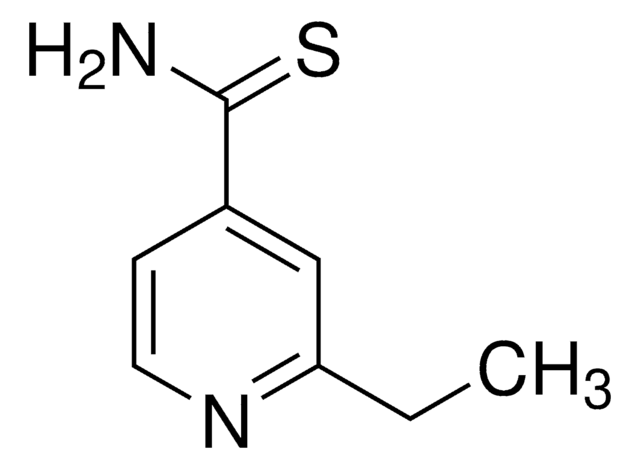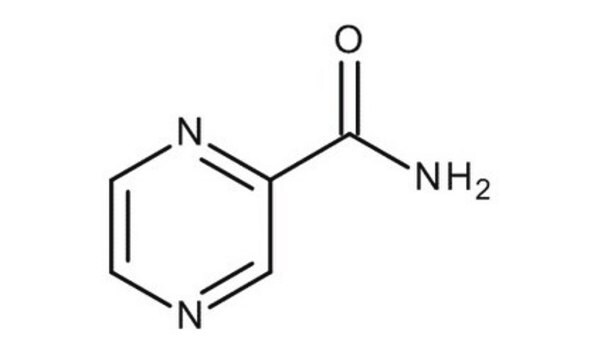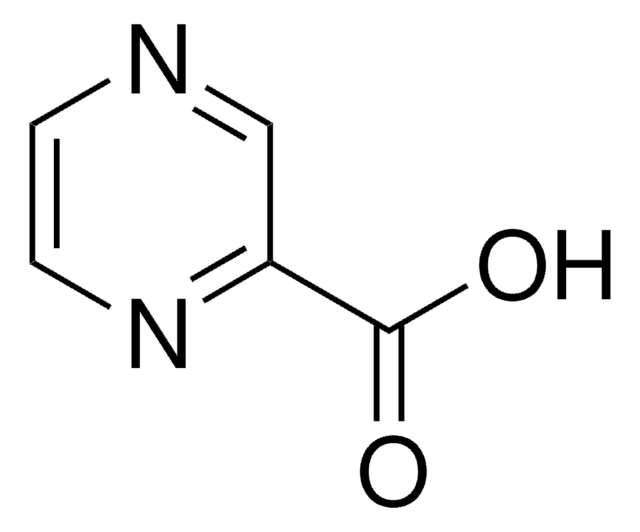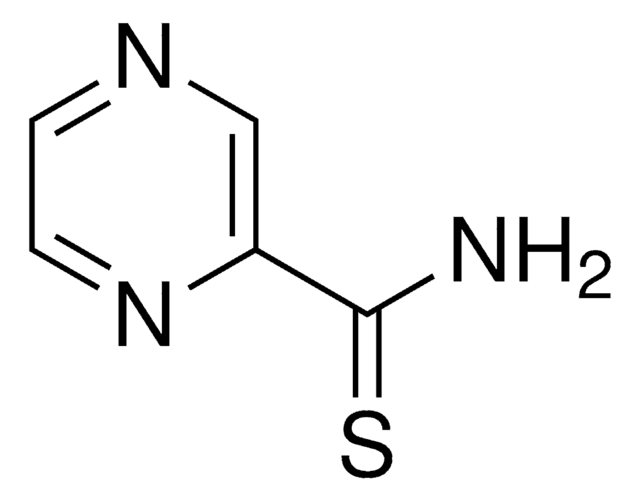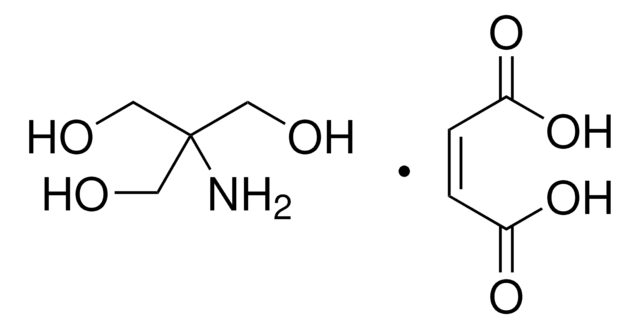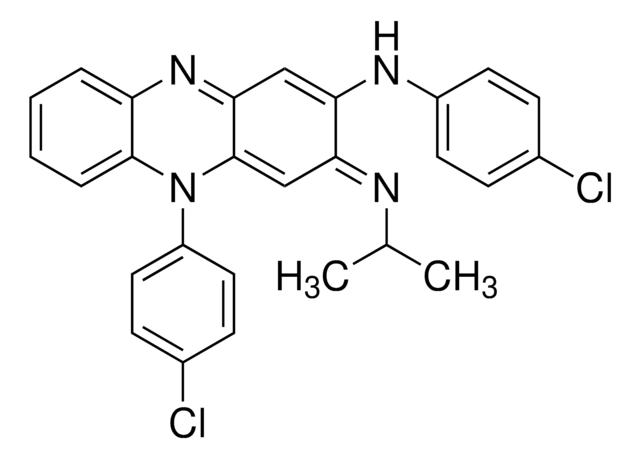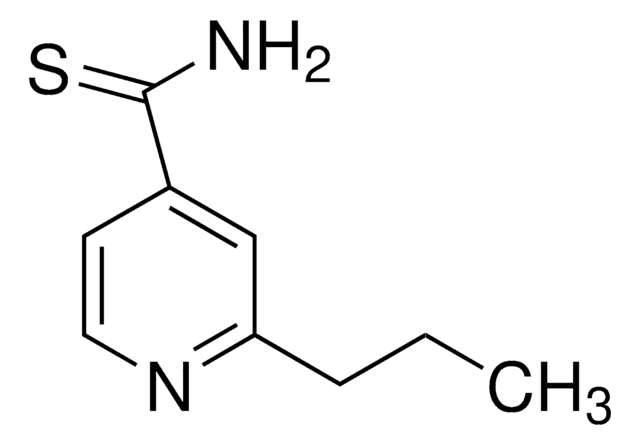Alle Fotos(3)
Wichtige Dokumente
P7136
Pyrazincarboxamid
Synonym(e):
Pyrazinamid
Anmeldenzur Ansicht organisationsspezifischer und vertraglich vereinbarter Preise
Alle Fotos(3)
About This Item
Empirische Formel (Hill-System):
C5H5N3O
CAS-Nummer:
Molekulargewicht:
123.11
Beilstein:
112306
EG-Nummer:
MDL-Nummer:
UNSPSC-Code:
41116107
PubChem Substanz-ID:
NACRES:
NA.85
Empfohlene Produkte
Form
powder
Qualitätsniveau
mp (Schmelzpunkt)
189-191 °C (lit.)
Wirkungsspektrum von Antibiotika
mycobacteria
Wirkungsweise
cell membrane | interferes
SMILES String
NC(=O)c1cnccn1
InChI
1S/C5H5N3O/c6-5(9)4-3-7-1-2-8-4/h1-3H,(H2,6,9)
InChIKey
IPEHBUMCGVEMRF-UHFFFAOYSA-N
Suchen Sie nach ähnlichen Produkten? Aufrufen Leitfaden zum Produktvergleich
Verwandte Kategorien
Anwendung
Pyrazinamide is used therapeutically as an antitubercular agent. Pyrazinamide is used to form polymeric copper complexes, create pyrazine carboxamide scaffolds useful as FXs inhibitors, and as a component of mycobacteria identification kits. It is used to study liver toxicity prevention and mechanisms of resistance .
Biochem./physiol. Wirkung
The active moiety of pyrazinamide is pyrazinoic acid (POA). POA is thought to disrupt membrane energetics and inhibit membrane transport function at acid pH in Mycobacterium tuberculosis. Iron enhances the antituberculous activity of pyrazinamide . Pyrazinamide and its analogs have been shown to inhibit the activity of purified FAS I.
Sonstige Hinweise
Keep container tightly closed in a dry and well-ventilated place.
Lagerklassenschlüssel
11 - Combustible Solids
WGK
WGK 3
Flammpunkt (°F)
Not applicable
Flammpunkt (°C)
Not applicable
Persönliche Schutzausrüstung
Eyeshields, Gloves, type N95 (US)
Hier finden Sie alle aktuellen Versionen:
Besitzen Sie dieses Produkt bereits?
In der Dokumentenbibliothek finden Sie die Dokumentation zu den Produkten, die Sie kürzlich erworben haben.
Kunden haben sich ebenfalls angesehen
Emmanuel Chigutsa et al.
Antimicrobial agents and chemotherapy, 57(2), 789-795 (2012-11-28)
Days to positivity in automated liquid mycobacterial culture have been shown to correlate with mycobacterial load and have been proposed as a useful biomarker for treatment responses in tuberculosis. However, there is currently no quantitative method or model to analyze
Pontus Juréen et al.
Antimicrobial agents and chemotherapy, 52(5), 1852-1854 (2008-03-05)
Thirty-four pyrazinamide-resistant and 37 pyrazinamide-susceptible Mycobacterium tuberculosis complex strains were analyzed for pncA gene mutations. None of the sensitive strains had any mutations, apart from silent mutations, whereas all but one resistant strain showed pncA mutations. By using sequencing as
Akos Somoskovi et al.
The Journal of antimicrobial chemotherapy, 53(2), 192-196 (2004-01-20)
Pyrazinamide is a paradoxical frontline tuberculosis drug characterized by high in vivo sterilizing activity but poor in vitro activity. This separation in pyrazinamide activity reflects differences between the in vivo tissue environment and in vitro culture conditions. The well-known acid
S A Tasduq et al.
Human & experimental toxicology, 25(3), 111-118 (2006-04-26)
Terminalia chebula Gertn. (Combetraceae) is an important herbal drug in Ayurvedic pharmacopea. In the present study, a 95% ethanolic extract of T. chebula (fruit) (TC extract), which was chemically characterized on the basis of chebuloside II as a marker, was
Martin J Boeree et al.
American journal of respiratory and critical care medicine, 191(9), 1058-1065 (2015-02-06)
Rifampin at a dose of 10 mg/kg was introduced in 1971 based on pharmacokinetic, toxicity, and cost considerations. Available data in mice and humans showed that an increase in dose may shorten the duration of tuberculosis treatment. To evaluate the
Unser Team von Wissenschaftlern verfügt über Erfahrung in allen Forschungsbereichen einschließlich Life Science, Materialwissenschaften, chemischer Synthese, Chromatographie, Analytik und vielen mehr..
Setzen Sie sich mit dem technischen Dienst in Verbindung.


